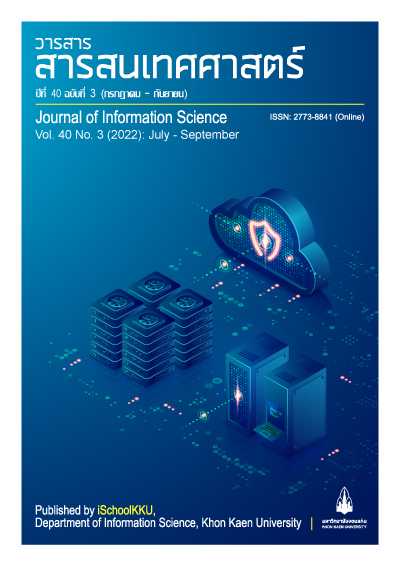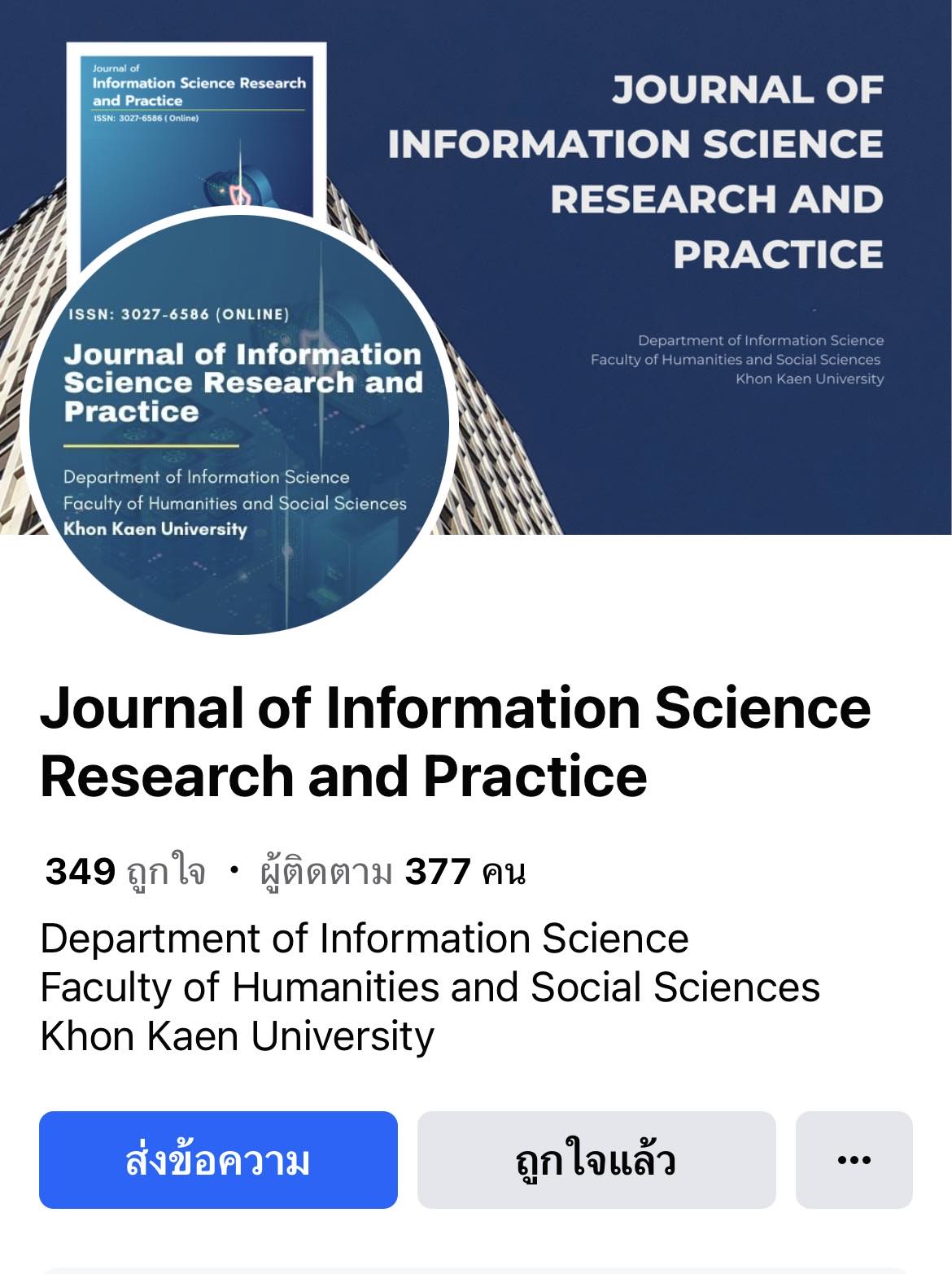Evidence-Based Library and Information Practice
DOI:
https://doi.org/10.14456/jiskku.2022.20Keywords:
Evidence-Based Library and Information Practice, concepts and development, EBLIP processAbstract
This article discusses important concepts of Evidence-Based Library and Information Practice (EBLIP), its definition and development of the concepts. Also provided are examples of the operation process of various types of libraries based on the EBLIP: academic, school public and special libraries.
Downloads
References
Ayre, S., Brettle, A., Gilroy, D., Knock, D., Mitchelmore, R., Pattison, S., Smith, S., & Turner, J. (2018). Developing a generic tool to routinely measure the impact of health libraries. Health Information & Libraries Journal, 35, 227–245.
Booth, A. (2002). From EBM to EBL: two steps forward or one step back?. Medical Reference Service Quarterly, 21(3), 51-64.
Booth, A. (2006). Clear and present questions: formulating questions for evidence based practice. Library Hi Tech, 24(3), 355-368.
Booth, A. (2009). EBLIP five-point-zero: towards a collaborative model of evidence-based practice. Health Information and Libraries Journal, 26(4), 341-344.
Cahill, M., & Richey, J. (2012). Integration of evidence-based library and information practice into school library education: a case study. School Libraries Worldwide, 18(2), 95–105.
Clyde, L. A. (2005). The basis for evidence-based practice: evaluating the research evidence. Paper presented at the World Library and Information Congress: 71th IFLA General Conference and Council. Oslo, Norway.
Crumley, E., & Koufogiannakis, D. (2002). Developing evidence based librarianship: practical steps for implementation. Health Information and Libraries Journal, 19, 61-70.
Eldredge, J. (2012). The evolution of evidence based library and information practice, part 1: defining EBLIP. Evidence Based Library and Information Practice, 7(4), 139-145.
Eldredge, J. D. (2000). Evidence-based librarianship: an overview. Bulletin of the Medical Library Association, 88(4), 289-302.
Eldredge, J. D. (2006). Evidence-based librarianship: the EBL process. Library Hi Tech, 24(3), 341-354.
Gillespie, A., Partridge, H., Bruce, C., & Howlett, A. (2016). The experience of evidence-based practice in an Australian public library: an ethnography. Information Research, 21(4), 1-21.
Gillespie, A., Partridge, H., Bruce, C., & Howlett, A. (2017). What do Australian library and information professionals experience as evidence? . Evidence Based Library and Information Practice, 12(1), 97-108.
Given, L. (2007). Evidence-based librarianship: what might we expect in the years ahead? Evidence Based Library and Information Practice, 2(1), 15-22.
Hallam, G. (2018). Being evidence based makes sense! an introduction to evidence based library and information practice (EBLIP). Bibliothek Forschung und Praxis, 42(3), 453–462.
Highfield, M. (2017). Missing in action: the pyramid foundation. Retrieved 1 January 2021, from https://discoveringyourinnerscientist.com/2017/09/23/missing-in-action-the-pyramid-foundation/
Holm, C. E., & Kantor, S. (2021). Reference is not dead: a case study of patron habits and library staffing models. Portal: Libraries and the Academy, 21(2), 299–316. .
Koufogiannakis, D., & Brettle, A. (2016). Being evidence based in library and information practice. London, U.K.
Richardson, S., Wilson, M. C., Nishikawa, J., & Hayward, R. S. (1995). The well-built clinical question: a key to evidence-based decisions. ACPJournal Club, 123(3), A12-13.
Richey, J., & Cahill, M. (2014). School librarians’ experiences with evidence-based library and information practice. School Library Research, 17, 1-23.
Sackett, D. L., Rosenberg, W. M., Gray, J. A., Haynes, R. B., & Richardson, W. S. (1996). Evidence based medicine: what it is and what it isn't? BMJ, 312, 71-72.
University of Saskatchewan. (n.d). Centre for evidence based library and information practice. Retrieved 1 May 2021, from https://library.usask.ca/ceblip/
Wilson, E. (2013). Evidence based library and information practice: what’s in it for you? Health Information and Libraries Journal, 30, 89–91.








